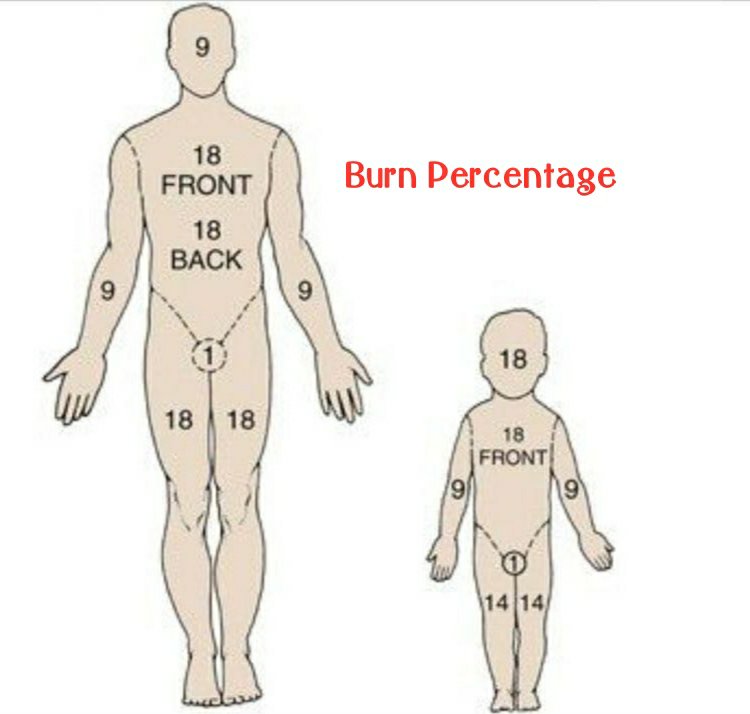Burns – Nursing Quiz Questions
Please Subscribe with your Google account to get regular email updates in your Inbox
Total Quiz Questions=20
Mark/Question= 5
Total Marks=100

Explanation/Rationale:- Burns – Nursing Quiz Questions – Free Nursing Quizzes
1.The deeper layers of the corium are not destroyed in first and second degree burns, regeneration occurs without scarring.
2.
3. During the healing phase the person experiences dryness and itching because of
- increased vascularization,
- destruction of sebaceous glands and
- decreased perspiration
4.
5.
6.
7. The major characteristic of the hypovolemic phase is a rapid fluid shift from the vascular compartment to the interstitial compartment
8. When the tissues are burnt, vasodilation, increased capillary permeability, and changes in the permeability of tissue cells in and around the burn area occur. As a result, abnormally large amounts of extracellular fluid, sodium chloride and protein pass into the burnt area to cause blister formation and local edema
9. Red blood cells trapped in the burnt area are destroyed and the injured cells continue to hemolyze, it will lead to renal damage and hematuria
10. Anaerobic metabolism from decreased tissue perfusion leads to increased acid end product (lactic acid) and decreased urine output also leads to retention of acid end products along with loss of serum bicarbonate leads to metabolic acidosis
11.
12.
13. As much as 20 – 30 minutes of continuous flushing may be necessary to assure complete removal of the destructive agent
14. Ice is to be avoided, since the severe vasoconstriction decrease circulation to the part and increases pain
15. Large doses of analgesics and sedatives are avoided because of the danger of respiratory depression and it may mask other symptoms
16. Fluids needs for the first 24 hours are calculated from the time of the burn. Usually the patient receives one half of the total amount in the first 8 hours, one fourth in the second 8 hours, and one fourth in the third 8 hours. One half of the total amount given on the first day is given in the second 24 hours.
17. Urine flow 30 to 50 ml is adequate for an adult. Urine flow should be at least 15 ml/hr for infants and 25 ml/hr for older children. After the first 48 – 72 hours the urinary output is no longer reliable guide to fluid needs because diuretic phase may initiate.
18. The “thirds” solution has limited antimicrobial action and is most effective against organisms that are affected by changes in pH. It is also used to clean the dirty granulation tissue
19.
20.
Thank You, Please Subscribe for All Upcoming Questions Series or You can Comment below your Email address get all updates in your mail inbox
Please Subscribe Our YouTube channel – The Nurse
Like our Facebook Page: The Nurse